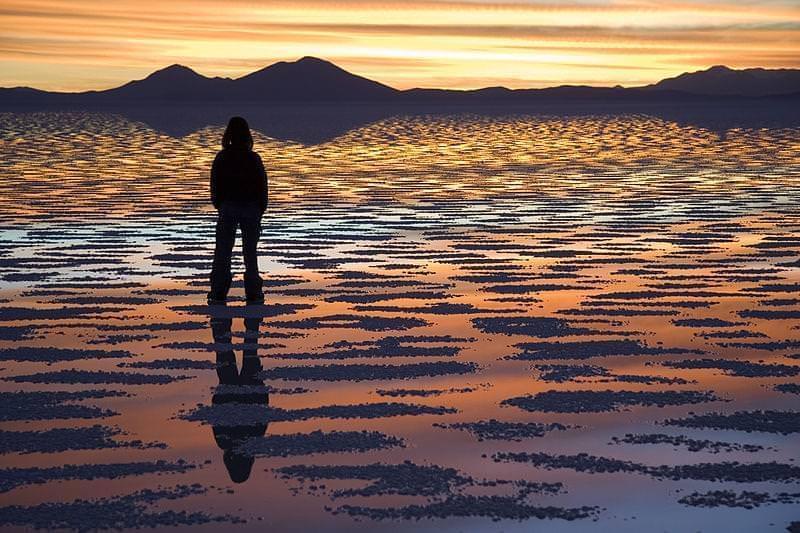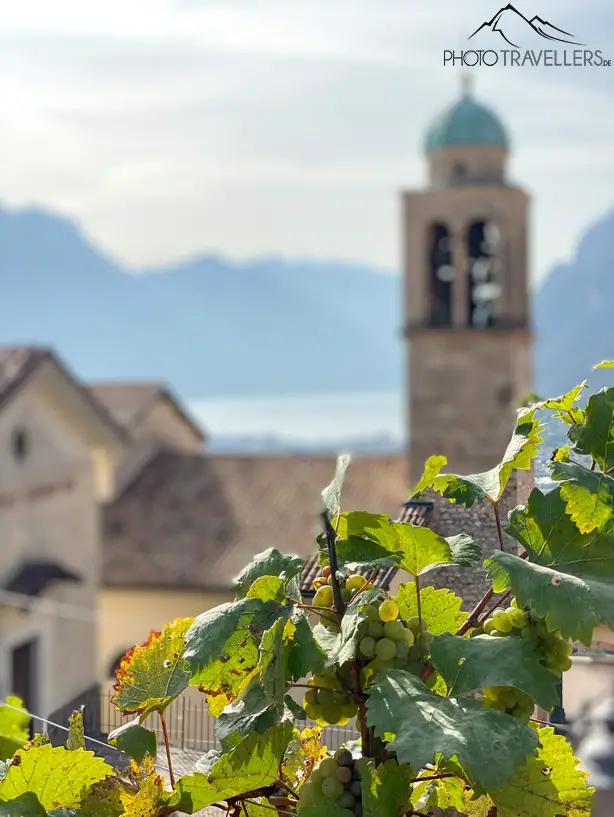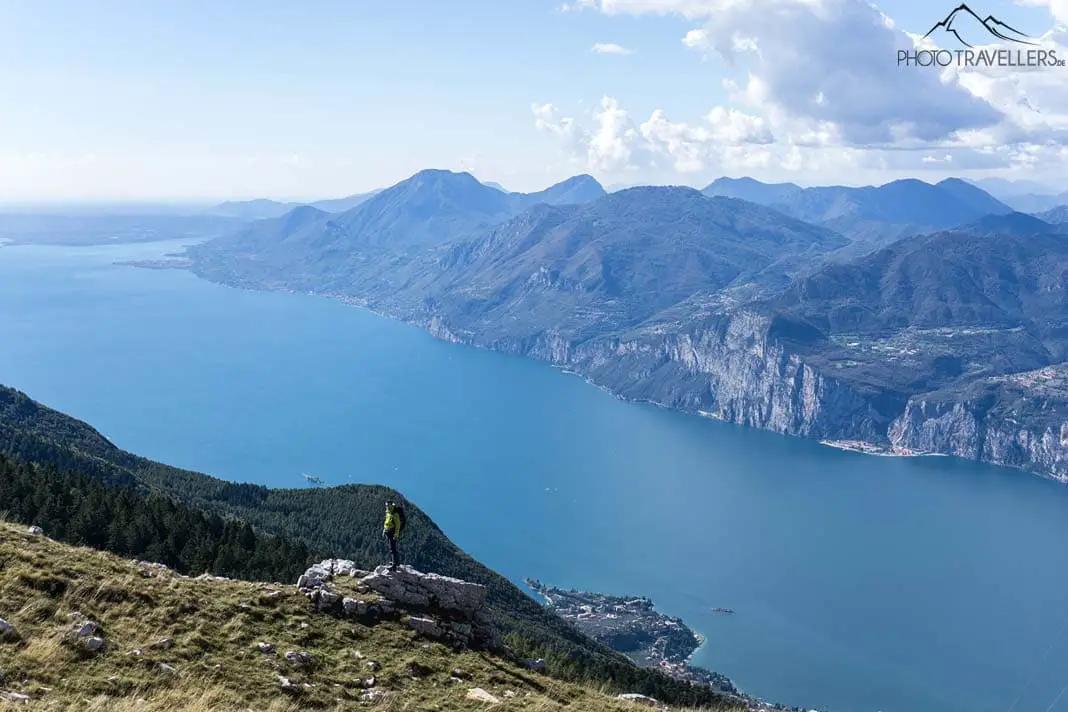
It is said to be made up of no less than 11 layers, with the surface layer being 10 metres thick, creating an expanse of white salt so sparkling that it would be the envy of a Cartier shop window!
Where it is and how to get there
From La Paz: Uyuni is well connected to the capital of Bolivia by internal flights of the Amaszonas company. Other cheaper means of transport are also available, such as the bus (journey time 12 hours) or the train. Alternatively, you can land in San Pedro de Atacama (in neighbouring Chile) and reach Uyuni by land with a 3-day trip
FromMilan or Rome: there are no direct flights from Italy, but Air Europa and Amaszonas operate flights with stopovers in Madrid, Santa Cruz and La Paz (duration from 26 h). Alternatively, you can land in San Pedro de Atacama (Chile) and continue by jeep - Compare flights
How to get to the Salar de Uyuni
The Salar de Uyuni cannot be visited independently but it is necessary to take part in organised 4×4 tours lasting one or more days, depending on the starting point. These usually depart from the town of Uyuni or from San Pedro de Atacama in neighbouring Chile.
Those who land in La Paz, the capital of Bolivia, can get to Uyuni by plane with a national flight of the Amaszonas company (flights 3 times a week), or by land with night buses that run the La Paz-Uyuni route (between 10 and 12 h). Another alternative is the train via Oruro, but places are few and must be booked in advance. Those arriving from Chile can join tours that leave from San Pedro de Atacama and arrive in Uyun after three days.
How much does it cost to visit the Salar de Uyuni? Prices, offers and advice
You cannot go into this immense expanse of salt on your own.
Tours by 4x4 jeep usually last three days, but prices vary depending on the length and customisation of the itinerary. A standard jeep excursion to be shared with other travellers (each car carries 4/5 people) costs about $180.00 (€150.00) departing from Uyuni, and $230.00 (€193.00) departing from Tupiza, on the border with Argentina. There are several multi-day tours departing from Atacama, but if you are staying in Uyuni you can also opt for a one-day tour with lunch included. Alternatively, if you are staying in La Paz you can opt for the 3-day air tour!
Packages include breakfast, lunch, dinner, accommodation in local houses with bathroom and cold water, and transport by 4x4. Entrance fees to the reserve, Incahuasi Island, border taxes, extra water and anything not specifically mentioned must be paid in bolivianos (300.00 BOBO, approximately €36.00).
Timetables and prices
Prices and timetables usually refer to guided tours, as it is not recommended to visit the reserve independently. In fact, one could easily get lost and in addition, suitable 4x4 vehicles are required. Make sure that the tours you book include the following costs:
Visit to Pueblo Fantasma: 15 BOB / €2.00
Entrance to Reserva Natural de Fauna Andina Eduardo Avaroa: 150 BOB / €20,00
Visit to Incahuasi Island, in the Salar de Uyuni: 30 BOB / €4,00
Bath at the hot springs (optional): 6 BOB / €0,80
Shower at the salt hotel (optional): 10 BOB / €1,30
Tours, guided tours and online tickets
1 day tour from Uyuni: 4x4 excursion, visit to the city, salt desert, Tunupa Volcano, handicraft museums with relics made of salt - from €60.00 approx. per person, book online
3-4 day tour: excursion with overnight stay in small shelters, visit to Isla Incahuasi and Isla de Pescado, Laguna Colorada, Terme del Sol de Mañana, etc. - from €150.00 per person, book online
When to go? Info on climate and best time
Month | Average temperatures (min/max) | Precipitation (days/mm) |
|---|---|---|
January | 4 / 17° | 2 days / 54 mm |
February | 4 / 16° | 2 days / 40 mm |
March | 3 / 16° | 1 day / 13 mm |
April | 1 / 17° | 1 day / 13 mm |
May | -3 / 15° | 0 days / 0 mm |
June | -6 / 14° | 0 days / 0 mm |
July | -6 / 13° | 0 days / 0 mm |
August | -5 / 15° | 0 dd / 0 mm |
September | -2 / 16° | 0 dd / 0 mm |
October | 1 / 17° | 1 day / 13 mm |
November | 2 / 18° | 2 days / 40 mm |
December | 4 / 17° | 2 days / 40 mm |
Climate: South-western Bolivia, where the Uyuni Desert is located, has a desert climate despite being at high altitude. The tropical sun being at a considerable height increases the effects due to the white surface. Here there is only one season with temperatures dropping below zero from May to October (-5/15°), but this is also the period where the risk of showers is zero. From November to April there may be some rain, but the rainfall never exceeds 150 mm a year.
Best period: The salar is dry in the winter months (May-Sept) and flooded by water in the summer months (Nov-Mar). Although it can be visited all year round, we generally recommend the transition months (September, October and November), when the light rains make the Salar a veritable mirror, totally blurring the boundaries between heaven and earth
Period to avoid: In the height of the austral summer (November to March), which coincides with the rainy season, some areas become inaccessible
What to bring: recommended clothing and equipment
Clothing: thermal and heavy clothing for the evening and night, heavy jacket, mid-season clothing for the day, comfortable shoes, wool cap, scarf, gloves
Equipment: thermos for hot drinks, hiking backpack, camera, sunglasses, sunscreen, heavy sleeping bag, thermal warmers
What to see and how to visit Uyuni and the Salt Desert

There are different types of tours, from a quick 1-2 day visit starting in the city of Uyuni to 3-4 day trekking tours.
Here is all the information you need to organise your excursion.
Inside the Salar you can visit:
Sol de Mañan: a geothermal area of 10 square kilometres between 4,800 and 5,000 metres characterised by intense volcanic activity that forms lakes of boiling mud, pools of steam where you can bathe and geysers with sulphurous fumaroles; a little lower, at about 4,200 metres, are the Termas de Polques, thermal springs for a bath in sulphurous waters at a temperature of about 30°.
Tunupa Volcano: a long-dormant volcano, it is located on the northern side of the Salar de Uyuni at a height of 5321 m, and dominates the entire immense salt desert. It offers a rich diversity of flora and fauna, the more experienced appreciate the climb but it is definitely not an excursion for everyone
Mummies of Coquesa: inside a cave on the edge of the desert you can admire the Mummies of Coquesa, inhabitants of the village of the same name, which date back some 3,000 years and were found inside this borderless desert
Laguna Colorada: at 4,278 metres above sea level. It is an amaranth-coloured lake due to the presence of algae and plankton. The shores are fringed with brilliant white deposits of magnesium, borax, gypsum and sodium. It is easy to spot pink flamingos here.
Hotel Luna Salada or Hostal di Sal: a salt building where inside there are tables and toilets also made of salt: here you often stop for a break before entering the immense salt desert. It is not really an attraction but could still be interesting for some
Cemetery of Locomotives: one of the places not to be missed in the Salar, here you can admire the remains of old trains that used to run along the Andean route
Isla Incahuasi: the largest island in the Salar, also called the Island of the Cacti, and is a rocky outcrop whose summit is formed by the remains of an ancient volcano. Don't miss the sunrise, when the cacti slowly ignite as the sun rises. Possibility of participating in special tours to observe the night sky and sunrise at the Salar
Hexagonal zone: a part of the Salar de Uyuni where the expanse of salt appears endless. In the drier months you are surrounded only by salt, while when it rains you can admire the splendid mirror effect
Anaconda Canyon: a desert area characterised by rock formations that were formed by petrified lava, giving rise to peculiar shapes such as the world cup, the tree, the sleeping camel and the lost Italy
Isla de Pescado: another island in the middle of the Salar, so called because when you look from east to west during the rains, you can see the profile of a fish. On its surface are numerous cacti, some as high as 10 m.
Useful tips for visiting the attraction
Only choose 4x4 jeep tours: this is the best way to avoid problems in the salty expanse of Uyuni. It is categorically not recommended to venture out alone and on foot; the desert is so large and uniform that getting lost would be all too easy.
Spirit of adaptation: don't expect hotels or 4-star accommodation, they don't exist. The accommodations are spartan, you dine early (around 19:00) because after 21:00 there is not even electricity.
Bring your own toilet paper: yes, the bathrooms are shared and have neither hot water nor... toilet paper!
History and interesting facts: what to know in brief

A slight variant of the legend claims that instead Tunupa's tears flowed after she was abandoned by her husband Kusku with their newborn son; during each breastfeeding, Tunupa despaired in tears that, mixed with her mother's milk, formed the Salar.
But to discover the real motivation, we have to go back some 40,000 years. The plateau on which the desert lies had no outlet, so all the water from the surrounding mountains flowed here, creating Lake Minchin, a huge prehistoric lake. Due to the high salinity, all the water hit by the strong rays of the Andes sun evaporated, leaving this massive salt crust.
At its deepest and most central part, the lake reaches a depth of 120 metres.
Informed travel: useful info Bolivia
Inhabitants: 11,428,245
Capital: legislative capital Sucre, government capital La Paz
Languages: Spanish, Aymara, Quechua
Local currency: Bolivian (BOB) / exchange rate: €1.00 = 8.23 BOB
Climate: varied according to the area. In winter, from May to October, the climate on the Andean plateau is dry, while in summer, from November to April, there is the rainy season. In the Amazonian areas, the humid heat is constant all year round, while in the desert areas it is dry all year round, somewhat colder during the winter.
Vaccinations: yellow fever vaccine strongly recommended for all travellers to Bolivia. Mandatory for those who come from or have travelled through countries at risk of transmitting the disease
Entry requirements: passport with residual validity of at least 6 months at the time of entry; return ticket. Health insurance recommended
Distance from Italy: 10,468 km (22 hours flight time including stopover)

